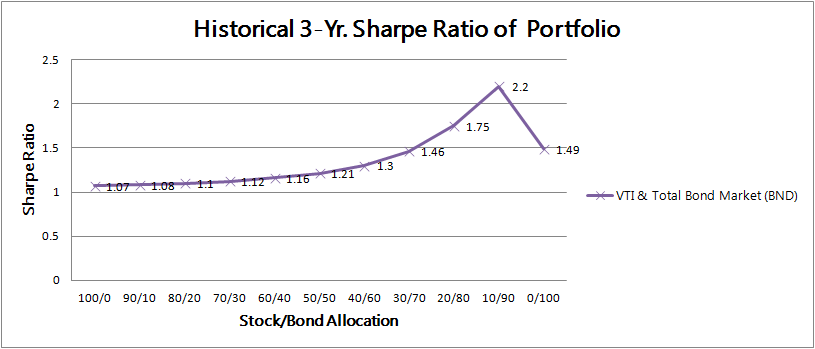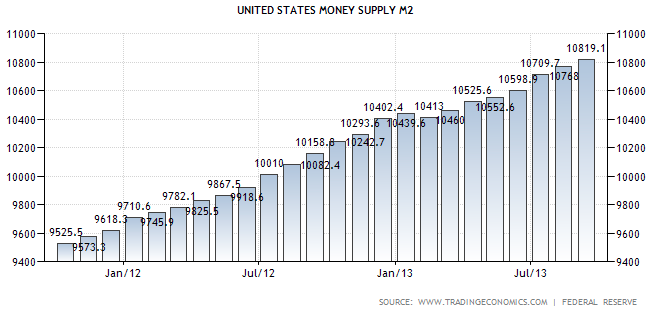How To Think About Stock Allocation
Post on: 24 Май, 2015 No Comment

Summary
- Long term portfolios should have significant equity exposure.
- Equity exposure can be more rewarding through individual stock selection, given extensive diligence is dedicated to the task.
- A proposal is presented for favoring earnings-based stock allocation model vs. more traditional market cap weighting.
The following article is written mainly for investors and investment managers with significant allocation in their respective portfolios to individual stocks. These investors and managers are assumed to have a long term horizon and therefore tolerance to sustain short term volatility.
Setting out the portfolio objective:
Some portfolios, usually called liability driven portfolios are constructed with a specific timeframe and a specific target value. Both the target value and the investment horizon are dictated by the most current estimate of the value of the liability at the time such a liability comes due. These portfolios are constrained by the timing and growth rate in their liabilities, and therefore should be managed using dynamic asset allocation decisions. For such a portfolio, expected returns for competing asset classes (equities, fixed income, etc.) during the remaining term of investment horizon should be continuously assessed and asset allocation adjusted accordingly to minimize the risk of missing the target.
Other portfolios, like those supporting university endowment funds, can be thought of as perpetual portfolios because of their undetermined time horizon. In a practical sense, very long term (multi decade) portfolios and perpetual portfolios can be thought of as the same, when thinking about the appropriate portfolio goal and resulting asset allocation choice. This is because both should aim to maximize wealth creation, not next year, but thirty, fifty or more years from today. To do this, a large exposure to the historically best performing asset class, stocks, is automatically required.
The next step is to decide how this exposure is to be maintained. One way is to pick one or a few ETFs to buy and hold. This would be effective in achieving the exposure, at a low cost. Another way, one which most of us at SA will likely lean towards is to research and pick a short list of stocks presenting favorable risk and reward characteristics relative to the market averages, with the goal of trying to beat these averages.
Thoughts on stock allocation:
One advantage from choosing to manage individual stock positions vs. investing in funds is that it enables analysis of businesses as opposed to securities. The manager of securities will worry about a fund’s beta, its correlation to other funds or an elevated market P/E. The stock analyst, instead, should worry only about finding good businesses priced at a reasonable discount to fair value.
For every investor or portfolio manager there is a limit, imposed by available time to manage the portfolio, on how many companies he or she can effectively track. The task includes reading quarterly, annual and special SEC filings, press releases and investor presentations for each portfolio company. Earning call and other transcripts, available and archived at SA, including analyst Q&A sessions are a great source of additional information. All of this, with the purpose of reviewing valuation models for each stock and confirming, revising or tossing investment thesis over time.

For me, being able to dedicate 5 to 7 hours a week to this task, the maximum number is about 20 stocks. At any given time I know how much each stock is worth according to my own valuation range, which gets updated quarterly or so (prices change every second and minute, but business value does not). Having a target number of stocks is useful because it helps keep the workload manageable, as stated, and it also helps set a minimum diversification threshold.
Earnings based allocation:
The key input for allocating funds to a list of well understood stocks has to be a valuation result. The problem with valuation models is that, even using ranges rather than specific values, there will always be one or two more discounted stocks relative to the others in the list. If one could hope to be 100% confident in the valuation result and underlying investment thesis, then having all portfolio assets invested in one or two best ideas would be the way to go. But such confidence is not ever to be achieved in the business world. Therefore, along with a maximum number of stocks, a minimum number should also be taken into consideration. The minimum number will ensure that we have adequately diversified even at the expense of keeping some not-so-discounted stocks in our portfolio.
Because the valuation model will not provide definitive allocation solution, an alternative is required.
Most market indexes weigh stocks by their relative capitalization so that a $10 Bln company will get twice the allocation of a $5 Bln company. This simplifies portfolio rebalancing and investment criteria, but it is arbitrary. Why not use enterprise values as a better way to determine firm size. This arbitrary method is then applied to individual portfolios, especially those tracking or trying to beat indexes; but I think a better way of seeking diversification would be to look at earnings, not market capitalization.
As previously stated, the goal of the perpetual portfolio should be to increase wealth in the long term. Since no one can control or reliably predict market multiples and other factors like interest rates that affect stock values, it is better to spend one’s limited time to studying the fundamentals behind earnings of current and prospective portfolio stocks in an attempt to achieve a diversified, resilient and growing portfolio earnings stream. Portfolio earnings would be the sum of all earnings per share for each position; for example, 100 shares of Coke at $2 per share would contribute $200 to portfolio earnings.
Unfortunately, reported company earnings are rather volatile. This is because they often include extraordinary items like costs related to acquisitions, asset impairments or gains on asset sales, etc. For my portfolio, I use forward earnings, which constitute the average analyst opinion from next year earnings. Because analysts cannot predict extraordinary items, these earnings reflect the average opinion for earnings during the next reporting period. Forward earnings are also less volatile than stock prices themselves; so even moderate revisions in forward earnings can cause big swings in the affected stocks. Focusing on the portfolio earnings will highlight opportunities from market downturns and provide a different perspective from most investors.
Regardless of portfolio value, a portfolio objective could then be expressed as a stated amount of portfolio earnings (I have seen some people use dividends as a stated objective as well). Portfolio earnings is also a good metric to estimate how much a portfolio should appreciate over time, because earnings are either used to pay dividends, or reinvested in the business (capex, debt repayment, etc.); assuming a $1 in retained earnings produces at least an equal $1 in share price appreciation.
I should note, an even better metric to use would be owner cash (earnings adjusted for noncash items like depreciation and cash items like capex and working capital) but this needs to be worked out using own assumptions.
Finally, I recognize there is a risk of bias in setting out earnings-based objectives, as allocation could become tilted towards low P/E stocks. This is also true for dividend objectives, which may bias investors into high dividend yield stocks. For any method, the long term characteristic of the portfolio should take greater importance; because the expectation of earnings (or dividends) must be both sustainable and growing, for the long term. In other words, there is no merit in reaching a specific earnings goal, of say $50,000 per year if such level of earnings becomes zero 5 years later.
Disclosure: The author has no positions in any stocks mentioned, and no plans to initiate any positions within the next 72 hours. (More. ) The author wrote this article themselves, and it expresses their own opinions. The author is not receiving compensation for it (other than from Seeking Alpha). The author has no business relationship with any company whose stock is mentioned in this article.














